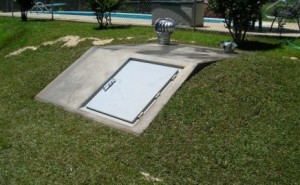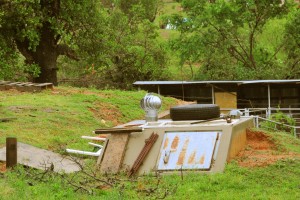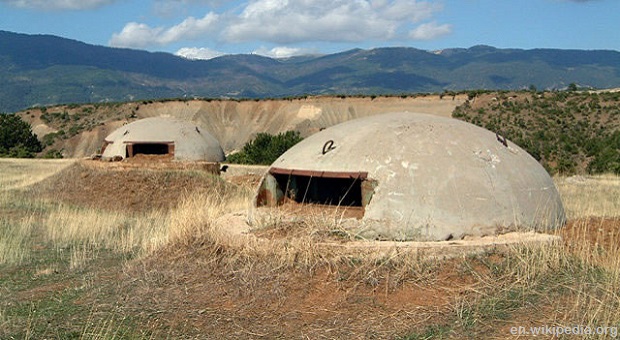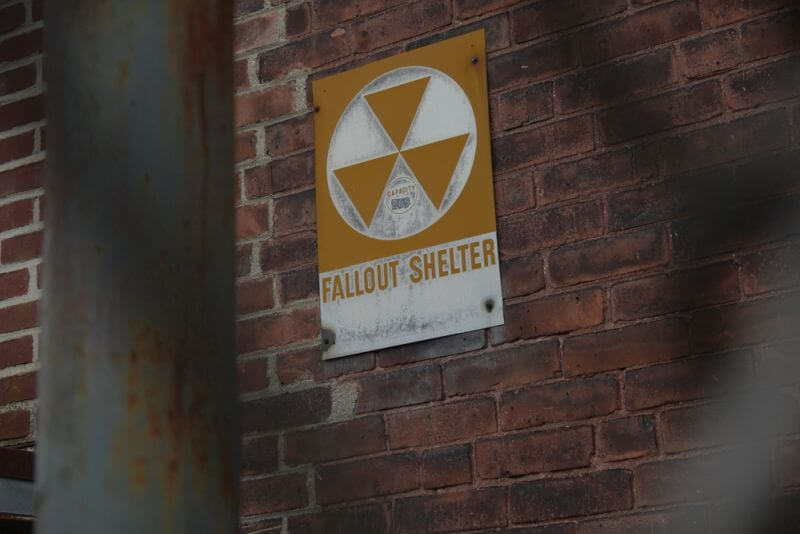Depending on the region you live in, and the range of possible disasters you wish to prepare for, there are a variety of emergency shelters you can purchase or construct to better prepare yourself. You may not be in the market for a post-nuclear holocaust bunker, but you may very well be living in an area that is at risk from floods, severe storms, earthquakes and tornadoes or other natural disasters.
While you can’t prepare for every possible scenario, you can ensure that you and your family have adequate shelter from the most common natural disasters in your area.
In this article we’ll explore some of the basics of tornado and severe weather shelters, ranging from reinforced basements to in-ground and above-ground shelters. I’ll also touch on some tips and suggestions for those who are interested in constructing a more bunker-like shelter.
Basement Shelters
 The basement is the de facto shelter location in many homes, chiefly because it is built below (or semi-below) ground level. When there’s nowhere more secure to take shelter, your basement really can be your best bet, especially in the case of a tornado or other extremely windy event.
The basement is the de facto shelter location in many homes, chiefly because it is built below (or semi-below) ground level. When there’s nowhere more secure to take shelter, your basement really can be your best bet, especially in the case of a tornado or other extremely windy event.
If you’re building your house and intend to use the basement for shelter purposes, reinforced concrete walls are one surefire way to add further security to your future shelter. For increased flood protection, you can also build your basement or renovate it with waterproof materials and reinforced storm windows.
Storm Cellar Shelters & In-ground Shelters
 A storm cellar or an in-ground storm shelter can be invaluable in areas where you’re at risk from tornadoes or other severe weather with high wind speeds. When that wind starts picking up, there’s hardly anywhere safer than your own little hidey-hole in the ground.
A storm cellar or an in-ground storm shelter can be invaluable in areas where you’re at risk from tornadoes or other severe weather with high wind speeds. When that wind starts picking up, there’s hardly anywhere safer than your own little hidey-hole in the ground.
In-ground storm shelters can be built or bought, and are frequently made of concrete reinforced with rebar. Steel constructed storm shelters can also be bought and installed, oftentimes as conveniently as within your own garage or just outside your back door.
If you’re building your own house, an in-ground storm shelter can be incorporated into your building plans with little additional effort and minimal cost. Many homeowners throughout the Midwest have had in-ground shelters on their property for decades and they swear by them.
Shelter Rooms & Above-ground Shelters
For the sake of convenience, or in the event that you or your family members need a shelter in an easy-to-access location, there are a variety of premade, above-ground shelters available.
Alternatively, a room in your house can also be turned into a dedicated shelter room or a closet can be used to house a portable, premade shelter. Premade, above-ground shelters come in a wide range of sizes, and can be set up in your back yard or in your garage.
If you live in an area that is at risk of regular or major earthquakes, incorporating a shelter room into the design of your house can be an especially useful precaution. Along the West Coast of the
United States and throughout the so-called ‘ring of fire’ in the Pacific Ocean, there are many areas that are prone to regular earthquakes, and they aren’t always small ones.
Indeed, the 7.1 magnitude earthquake that struck Japan and caused the crippling Fukushima nuclear disaster, happened along the same ‘ring of fire’ that stretches along the West Coast, and it followed an earlier earthquake of 9.0 that struck in the same region.
Bomb Shelters & Bunkers
For those who like to be prepared for just about everything, the bomb shelter / nuclear fallout bunker may be worth consideration. This endeavor is not for the faint of heart, as bomb shelters can range in price from a few thousand dollars and a lot of DIY work, to the kind of stuff you hear about celebrities building for tens of millions of dollars, and everything in between.
If you have the know-how to build it yourself or money is no object, though, you can create your own bomb shelter, zoning and planning paperwork aside.
Your typical bomb shelter can be built from reinforced concrete and/or steel and other materials, but the golden rule is that you’ve gotta bury that sucker. And bury it deep, typically 3 ft. or deeper.
If you’ve identified a likely target for nuclear attack within your area, the location and depth of your bomb shelter will be all the more important as you’ll want to consider how to avoid radioactive fallout. After a nuclear attack, you may need to stay in your shelter for upwards of two weeks, so sufficient food, water and medical supplies are another essential.
When building your shelter, pay special attention to the location of any water mains, sewer lines or electricity cables that may be buried on your property. You’ll also want to take precautions to waterproof your shelter if possible, in order to avoid the shelter being damaged by flooding.
Sheltering from Floods
If you have the option of buying a home on high-ground or of building your own home on higher ground, this is one of the best ways to protect your home from potential future floods.
Building on high ground isn’t always an option, though, and sometimes floods can get so bad that even if you did build on higher ground, you weren’t able to build high enough to escape the water. Worse still, most insurance policies consider floods to be uninsurable acts of God, so when serious flooding happens in a residential area it can be especially devastating.
With the help of modern science, barriers designed for effective flood protection have been developed to suit a wide variety of needs. From literally building your house out of flood-damage resistant materials to renovating an existing property for better flood control and protection, there are many options available to help you better flood-proof your property.
Permanent flood barriers with built-in flood gates are one option where flooding is frequent or recurs during certain times of the year. If your chief priority is the flood-proofing of your home rather than your whole property, then doors, windows and other entryways into the house can be renovated with flood-proof glass, specialized UPVC (Unplasticized Polyvinyl Chloride) flood doors, and even the walls and siding of the house can be adapted to allow for the easy installation of additional UPVC boards as in the FloodArc.
Alternatively, you can also protect your property or other important tracts of land from flood-waters with the use of portable flood barriers. Portable methods such as the Floodstop barrier, the Rapidam or the AquaDam can all be erected quickly to protect against incoming floodwater, with an average height of 1 – 2 yards.
These portable methods are designed to fill up with the rising floodwater, effectively fighting water with water.
One more source of floodwater in the home, which is somewhat nasty and often overlooked until after the fact, is the sewer that connects to your toilets. During particularly bad floods, many people have found themselves ankle-deep or worse in sewer water that has been backed up into their homes from their toilets.
You can avoid having this happen to you by simply having a sewer non-return valve installed for your property. More sophisticated valves may even incorporate a pump action to allow you to continue using and flushing your toilets during a flood by pumping the waste out against the pressure and flow of the overly full sewer pipes.
This article has been written by Bill White for Survivopedia.







































































Please note, most all of the proposed shelter designs, even FEMA designs, have the same, often overlooked flaw, namely an out-swinging door. Sounds innocuous, but it only takes a small blown down tree or other minor debris to trap you inside. My below-grade structure has a high strength security door swinging inward to minimize this issue.
I use a hydraulic ram from a cherry picker that is mounted to the door and the wall. It can press out a couple tons far enough for me to get out. There would have to be something REALLY big in order for me to not be able to get out.
A section of passage in the middle of your home with reinforced concrete walls, floor, and ceiling, with fire doors at each end can be a shelter against wind and fire and may be above flood level. Add a well equipped closet or two and you can have just about everything you need, especially if you include the bathroom in the design. Disabled people will have access and looters and others will not even know it is there.
Good advice here. This type of passage requires a second exit in case of emergency?
I’m right in the middle of the chaos we’re experiencing now in NE Co. As an adjustor, I saw waaaaay to many claims denied. No matter what it takes, like they say, “take the high ground”!! The other option in possible flood areas, build
literally on “stilts” & use little carpet or other damage prone things.
I have plans for using box cars from R.R or storage containers burried and linked together to make a type of liveing ,storage,*ir filteration syst, also waste andfuel storage it also has a green house option .is this a possiblty anyone else have the same idea?